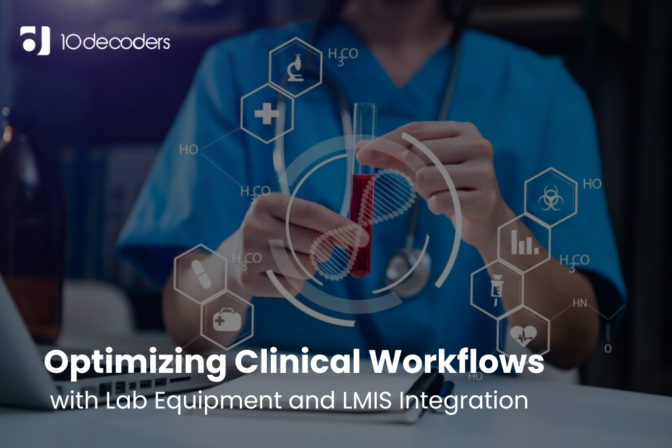Optimising Clinical Workflows with Lab Equipment and LMIS Integration
In the dynamic environment of healthcare, efficiency is paramount. Patient care hinges on timely diagnosis, accurate test results, and streamlined workflows. However, fragmented clinical laboratory processes often impede progress, introducing delays and compromising data integrity. Fortunately, a powerful synergy emerges when Laboratory Information Management Systems (LIMS) integrate seamlessly with laboratory equipment. This fusion transforms clinical workflows, unlocking improved patient care and operational excellence.
The Disconnect: Siloed Data and Fragmented Workflows
Traditionally, clinical laboratories have operated in silos. Lab equipment, often from diverse vendors, functioned independently, generating data trapped within isolated islands of the broader patient information landscape. While LMIS managed clinical data like specimen requests and test results, capturing the rich information generated by individual instruments proved challenging. This disconnect caused
- Manual Data Entry Errors: Technicians spent precious time transcribing data from instruments to LMIS, prone to human error and introducing delays.
- Limited Data Visibility: Lack of real-time data exchange meant clinicians might not receive crucial results promptly, impacting treatment decisions.
- Fragmented Workflows: Disconnected systems resulted in inefficient processes, hindering specimen tracking, result validation, and overall turnaround times.
The Bridge: Interoperability Orchestrates Data Harmony
The key to unlocking the true potential of both lab equipment and LMIS lies in interoperability. This involves establishing a bidirectional flow of information between instruments and the LMIS. Imagine each instrument as a dedicated performer, adept at their individual task. Interoperability acts as the conductor, harmonising their melodies into a cohesive, efficient system.
With interoperability
- Automatic Data Transfer: Results flow directly from instruments to LMIS, eliminating manual entry and its inherent errors.
- Real-time Data Visibility: Clinicians and lab personnel have immediate access to the latest data, empowering informed decision-making and faster interventions.
- Workflow Automation: Repetitive tasks like sample tracking and result validation can be automated, freeing up valuable staff time for complex tasks.
- Standardised Communication: Interoperability paves the way for standardised data formats and communication protocols, enabling seamless communication across lab equipment and LMIS from different vendors.
Analysing the Benefits in Practical Terms
Integrating lab equipment and LMIS extends beyond mere data efficiency. Let’s analyse the quantifiable benefits
- Enhanced Patient Care: Faster turnaround times result in quicker diagnoses and timely treatment, leading to improved patient outcomes and reduced risks.
- Reduced Costs: Automation eliminates manual data entry, minimises errors, and streamlines workflows, leading to significant cost savings in the long run.
- Improved Quality and Compliance: Standardised data formats and automated validation processes enhance data quality and ensure compliance with regulatory requirements.
- Research and Development: Real-time access to rich data opens doors for research and development, allowing labs to analyse trends, identify disease patterns, and contribute to advancing medical knowledge.
The Implementation: Translating Theory into Practice
Achieving this harmonised workflow requires careful planning and execution. Here are some key considerations
- Choosing the Right LMIS: A robust LMIS with built-in integration capabilities and compatibility with existing lab equipment is crucial.
- Standardisation: Implementing standardised data formats and communication protocols across instruments and the LMIS ensures seamless data exchange.
- Training and Support: Training staff on new workflows and LMIS functionalities is essential for successful integration and user adoption.
- Ongoing Maintenance: Continuous monitoring and maintenance of the integrated system ensures smooth operation and data integrity.
A Future of Precision and Innovation
Integrating lab equipment and LMIS is not just an operational upgrade; it represents a transformative shift in clinical laboratory management. It paves the way for a future where
- Artificial intelligence and machine learning: Can analyse real-time data to predict potential issues, optimise workflows, and even assist with diagnoses.
- Remote diagnostics and personalised medicine: Become more feasible with readily available and interoperable patient data.
- Collaborative laboratory networks: Can emerge, enabling knowledge sharing, resource optimization, and improved care delivery across geographically dispersed locations.
In conclusion, the strategic integration of lab equipment and LMIS is not merely a technological innovation; it’s a powerful investment in a future where every data point resonates with improved patient care, streamlined operations, and ultimately, a healthier world. As we move forward, embracing this transformative technology will allow us to orchestrate a clinical symphony of precision and efficiency, where every note of data harmonises to deliver outstanding healthcare.



